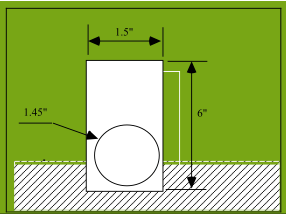Design Methodology Overview
by Max Yi Ren
Activity 1: Introduce the problems your want to address
As we have started thinking about real-world problems that could be addressed in this project, it is a good time to share our ideas and collect feedback from others.
For the team who presents the problem and potential solutions, please provide the following information
- What is the problem?
- How is it done today?
- What’s new in your solution?
- Who cares?
- What are the risks of your solution?
Also see The Heilmeier Catechism.
For other teams, please criticize from the following perspectives:
- Did the proposer miss existing solutions?
- Do people really care about this problem?
- Who will pay for the solution?
- What are the risks of this solution?
Also watch Tony Fadell’s TED talk: The first secret of great design
Activity 2: Create a persona
A Persona is a description of a character that the product will be designed for. A Persona represents:
- Personal Profile, e.g., age, gender, education, habits, social status, marital status, occupation, hobbies, et.
- Role, e.g., position at work, role at work, etc.
- Context, e.g., social and cultural background, peers, family status
What is the persona of your users?
Activity 3: Think out of the box
-
Double check your assumptions: You have nine dots. Draw four continuous straight lines passing through each of the nine dots, but DO NOT pass a dot twice, retrace a line, or lift your pen.

- Let’s try another problem: You are one of five people in a locked room with a concrete
floor. There is a steel tube embedded in the floor. A ping-pong ball is inside the tube.
Get the ball out of the tube in the most efficient manner.
 You have:
You have:
- a chisel
- a box of cornflakes
- a hammer
- a file
- a wire coat hanger
- a light bulb
- 100ft of clothesline
- Team brainstorming:
- List potential solutions to your problems
- Discuss what assumptions you imposed on the solutions
- Discuss if these assumptions can be removed
Activity 4: Morphological analysis
Now let’s think about how your solution can be realized through a product. Practice the following using your problems
- Identify all functions of your solution
- Make each function a row in a matrix
- Identify all possible means to realize each function, and list in columns
- Create solutions by combining different means and drawing the concept
Activity 5: Optimal design and optimal control
- Learn the concept of objective, attribute, variable, constraint in a static setting
- Learn the concept of state, action, reward, controller in a dynamic setting
- Is finding solutions to a static design problem a dynamic process?
- Team discussion: What are your design objectives, variables, attributes, constraints, and assumptions?
Activity 6: Critical thinking
- Design a cola can
- Find the curve of fastest descent (see Brachistochrone curve and its derivation)
- Design a bridge (see TopOpt)
- Four-bar linkage design (see MotionGen)
- Optimal design + control (see ecoRacer game)